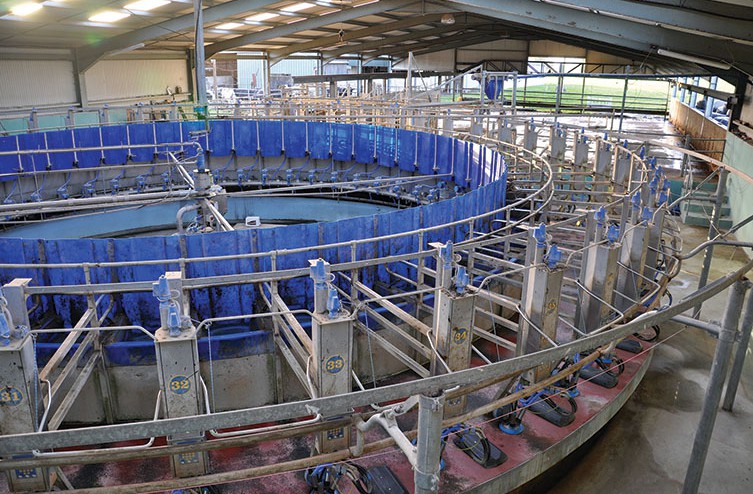
Farming in Ireland has been the mainstay of the economy for thousands of years and even though the reliance on the agricultural industry for everyday living is not as strong as it used to be, it still plays a massive part in our lives.
There are approximately 139,800 family farms in Ireland with an average size of 32.7 hectares per holding according to the last agricultural census. The island has the best grass on the planet and a reasonably mild climate.
Ireland’s temperate climate and grass growing ability, combined with a dairying tradition, are natural advantages that make Ireland one of the foremost milk producers in the world. In 2011, we had over 1.1 million dairy cows producing milk on 18,548 dairy farms.
For this month’s edition of Irish Tractor & Agri, we profile Tipperary based dairy farmers the Powell family who operate on 152 hectacres.
Brian Powell is the fifth generation of the family to run the family farm and he does so along with his father John and brother Barry.
At present, they are milking 290 cows twice daily and the abolishment of the milk quota earlier this year has been met with a seal of approval from the Powells.
When milk quotas were introduced, Ireland had 63,000 farmers milking cows on about 1.7 million hectares. Consolidation into larger herds resulted in seven out of ten farmers leaving the business since then. A large proportion was small scale and could not justify the required capital investment in housing and milking facilities, especially when quotas prevented any expansion, but the removal of the quota is set to change all that.
“I definitely think the abolishment of the milk quota is a good thing and it is the best situation for farming in this country,” said Brian.
“We are milking 290 cows at the moment but we are looking to increase that to between 320 or 330 by next year. That is the plan anyway. It is all about managing the farm the best way possible.”
The Powell family are certainly progressive farmers and Brian revealed that they have all gained experienced from the number one country for dairy farming, New Zealand.
For well over a century, New Zealand’s dairy industry has prided itself on the opportunities it gives to young people entering the sector. The system in New Zealand is a bit like climbing a ladder. At every rung of the ladder, there are opportunities for progression.
Share-milking has been the traditional route for most New Zealand farmers to get into land ownership. In a share-milking arrangement, the share-milker provides the cows, labour and machinery and the landowner provides the land and infrastructure. The milk cheque and certain costs are split 50:50.
“Years ago, my father spent time in New Zealand working on a dairy farm and he brought a few ideas back with him which he implemented into the farm here to a great deal of success.
“Barry was over there for four years and he also learned a lot during that time, while I spent time over there as well and it certainly is a learning experience.”
The Powell family installed at Dairymaster Rotary milking parlour back in 2008 and Brian admitted that they are delighted with the machine.
“It takes us about an hour and 20 minutes to do the milking these days whereas before that it would have taken up to three hours. It frees up so much more free time for us and lets us get on with other work around the farm.”
The Powell’s carry out the majority of the work on the farm themselves, although a contractor does come in for certain jobs.
“We would have a contractor doing the baling and while we knock our own silage, we would have someone else come in and pick it up. We find this more efficient and the work is done quicker.
“However, we do our own ploughing, reseeding, slurry and other work as well. We have just bought a Keenan feed wagon to go with the machinery that we already have. We use John Deere and New Holland tractors all of which is bought locally.”
Brian added that there main priority for the immediate future was to grow more grass and expand the herd. Young grass grows faster and has an average of 4 to 6% more protein than older grass, so farmers often fence the cows into small sections of pasture. This forces the animals to graze tightly down to the base of the grass. This in turn encourages rapid regrowth of the highly desirable young grass. The cows rotate all season long from one bright green salad bowl to the next.
“We are looking at managing the grass better and grazing it better. One way would be to get the cattle out earlier, but that all depends on the weather.”
Powell Dairy Farm
Ballycrenode
Nenagh
Co Tipperary
Taken from Irish Tractor & Agri magazine Vol 4 No 2, February 2016